Martin Middlebrook
- Home
- Latest News
- 2024
- January 2024
- Martin Middlebrook
Martin Middlebrook, who is so well known to members of The Western Front Association through his book ‘First Day on the Somme’ has sadly passed away, aged 91.
Martin was born in 1932 to a family that had lost members in the Great War. His mother’s elder sister was in Belgium in 1914 and spent most of the war in the country under German supervision. His mother’s brother (Martin’s Uncle Andrew) died of wounds whilst serving in the 4/Lincoln with another brother captured in March 1918 whilst serving in the 8/Gloucesters.
After leaving school aged 17 Martin underwent national service, serving as a 2nd Lieutenant in the RASC where he probably learned to drive trucks and large vehicles – a skill that would serve him well in later life.
After marrying a local Boston girl (he was proud of his Boston roots) called Mary, he started an egg business and by the late 1960s had three daughters of school age, a business that was doing well and some time on his hands. In September 1967 he went – with his friend John Howlett – on probably what was to be a most significant trip for him – and for future generations of Great War enthusiasts – a pilgrimage (in a Morris 1100) to the battlefields of the First World War.
Martin had previously read various books on the war and he and John visited Arras and Verdun, but it was the Picardy town of Albert that seems to have made the most significant impression. On his battlefield tours (which will be mentioned later) he frequently referred to the Gordon’s Cemetery – just across from the Devonshire Cemetery – as a place he stopped on that first trip and found the headstones of the men who were killed on 1 July, with the subaltern laying beside them. He reflected – on these occasions – on his own national service.
Returning home, the idea of writing a book about this seismic event took hold, but where to start? Martin had worked in his father's potato business and as an egg producer, neither of these gave him the skills to write – or so he thought.
The egg business, however, gave him an opportunity to visit the Public Record Office at no cost as he travelled to London for the Egg Marketing Board meetings (he had been elected as a representative) twice a month with all travel costs paid for. He therefore was able to undertake a day and half at the PRO (as it was called then) on these trips to London.
Martin – when asked about the book – told me that he had intended for there to be a chapter dedicated to one man in all the attacking divisions on 1 July 1916, but this eventually had to be whittled down. Asked what happened to the stories of the men who did not make it into his book, he said these ended up as shorter passages and footnotes.
His publisher asked a ‘well known historian’ for his views on an early draft of Martin’s book. Although he did not know it at the time Martin later revealed this was Correlli Barnett. Correlli’s views (he did not think much to Martin’s book) were thankfully disregarded.
After many trials and tribulations, including the first word on the first page initially being mis-spelled (he was not happy that ‘Foreword’ was mis-typed as ‘Forward’) Martin’s book ‘First Day on the Somme’ came out, appropriately enough, on 1 July 1971. Although it did well, and led to him writing other books, sales were not spectacular.
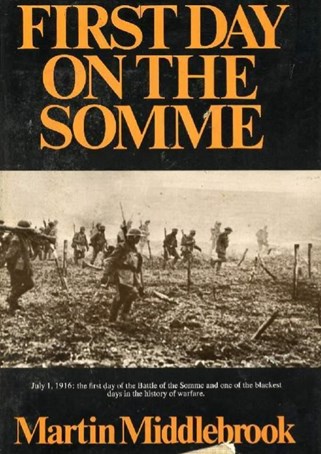
Martin was – however – taken aback in 2001 when a survey on the WFA’s website showed ‘First Day’ to be (by a significant margin) the ‘favourite’ book of members taking part. Using a points system for members’ ‘top five’ books, First Day amassed 99 points, about the same number of points as the 2nd, 3rd and 4th books combined. (Her Privates We by Frederick Manning, Memoirs of an Infantry Officer by Siegfried Sassoon, They Called it Passchendaele by Lyn Macdonald. The next most popular in fifth place was ‘Goodbye to all That’ by Robert Graves).
This survey resulted in the book being re-published by Pen & Sword in Barnsley, and sales then really ‘took off’.
Tours to the Front
Martin – after being asked by some friends to take them to the battlefields – realised there may be an interest among enthusiast for tours to the western front. He therefore started taking groups out.
The first, or at least an early tour, included the (habitual smoker) Rose Coombs as the official guide, with Martin driving the bus. He soaked up as much knowledge as possible out of Rose, who he counted as a close friend. However when taking the tours out to France and Belgium, Martin always insisted on these being ‘non-smoking’ and was not averse to ticking off anyone who transgressed this rule.
Martin’s tours started in 1984 and from then until his retirement in 2004 he personally led over a hundred tours to France, Belgium and Gallipoli.
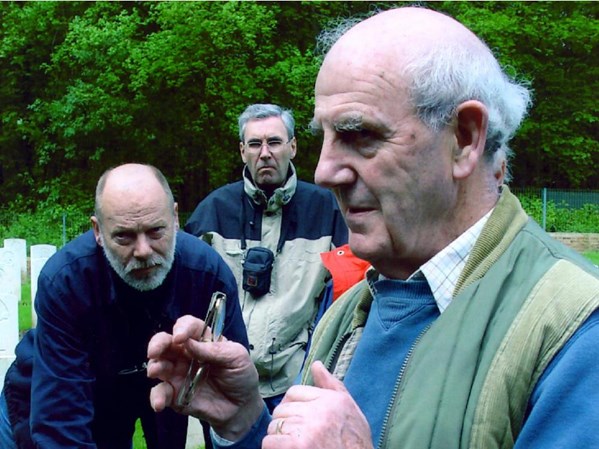
Martin Middlebrook (1932-2024) giving his 'cemeteries and headstones' talk to attentive members of the WFA.
It was on one of these tours I first met Martin. It was 1991 and the 75th Anniversary of the Battle of the Somme. Although a local (Boston) firm supplied the bus and driver, Martin still got behind the wheel from time to time (ostensibly to allow the driver a break, but I think he enjoyed this aspect). Martin was presented with a WW1 officer's whistle by one of the guests and he used this in subsequent tours to encourage those travelling to get on the bus after a visit to a point of interest. It certainly helped keep the tours running to time.
Observing these tours, it was obvious that Martin was emotionally attached to the subject and particularly to the Somme (more so than Ypres or other areas). He shared his plans for the trips in detail (a first morning operational overview in the front reception room of the Hotel de la Basilique was a feature) however, in the best traditions of military plans, these rarely survived first contact with reality ‘on the ground’. But this was all to the advantage of those on the tours. One tour ended up on the roof of the Ulster Tower and another going up the inside of the Thiepval Memorial. Seeing the landscape from this vantage point was memorable to say the least.
Martin never really expanded his tours business. His brochure was ‘modest’ (he realised that costly brochures were not likely to help much) and relied very much on repeat business and word of mouth. The tours were invariably full for trips to the Somme and other trips (for example to Gallipoli) were undertaken. He took on board a business partner, Mike Hodgson (who sadly passed away a few years ago) and Mike ran the business ‘solo’ for a few years after Martin retired.
Branches of the WFA were often keen to use Martin as a speaker and it is well recorded that many of his talks were the best attended that branches put on (a visit to the Yorkshire branch in 1998 resulted in an attendance of 143 – such a crowd is likely to have breached all H&S regulations!)
Martin again visited the Yorkshire Branch in 2005 but this – he said – would see the end of him making ‘longer trips’, although it seems he broke this self-imposed rule and continued to give talks for a few more years.
After ‘First Day’ Martin continued to write. For WFA members his ‘The Kaiser’s Battle’ is probably the most significant. Martin said on many occasions that he thought The Kaiser's Battle, which describes the first day of the German Spring offensive on 21 March 1918 to be a better researched, better written and more important historically than his earlier book on the first day of the 1916 battle. Despite this, 'First Day' outsells 'The Kaiser's Battle' by a substantial margin.
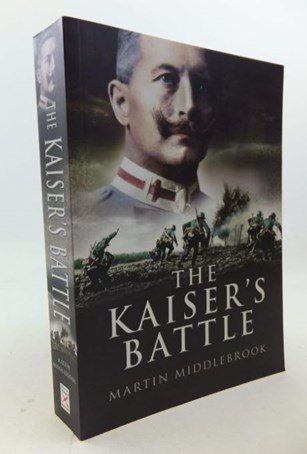
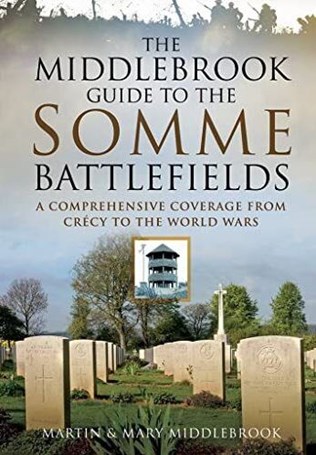
He also wrote numerous Second World War Books, and one on the Falklands. His ‘Guide to the Somme Battlefield (written with his wife Mary) came out in the early 1990s. His last published work on the Great War was in 2003 when he wrote ‘Captain Staniland’s Journey’ about an officer in the Lincolns. The book starts with the question why a local house was named ‘Lindenhoek’.
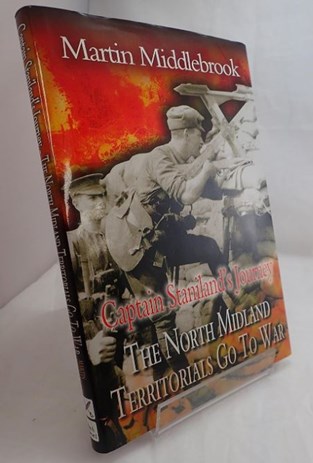
In 2018 Martin was keen for an edition of Stand To! to republish an entire chapter from his ‘Kaiser’s Battle’ but the sheer word count of doing this would have been impossible. He was however keen for the anniversary of Operation Michael to not go without mention. As it happened, Jon Cooksey (editor of Stand To!) was planning a special edition and I was happy to assist. As a result an analysis of Martin’s research into ‘Kaiser’s Battle’ was written which showed that Martin’s statistical approach to those killed on 21 March 1918 was, in those pre-internet days, highly accurate.
Sadly his wife, Mary passed away in 2014. Martin had moved from Boston to the Cheltenham area but later moved back to his beloved Boston to spend the last years of his life.
He was influential to so many it is impossible to add tributes from everyone. Clive Harris, however, remembers him, having known him for many years:
Like so many of us, Martin’s books were a catalyst in forming my fascination with the Great War. I remember borrowing ‘The First Day on The Somme’ from the mobile library around 1980 that led to me pestering my Grandad to take me to Ypres. ‘The Kaisers Battle’ soon followed, and I started to collect medals and ephemera related to the 21 March 1918. From the late 1990s I got to know Martin very well, and while he would let you know exactly what he was thinking, there was a charming, gentle side to him that never failed to shine through. We met frequently and visited the battlefields together, notably on his last ever visit where we emotionally ended where it all started for him in Cabaret-Rouge British Cemetery.
I am not sure Martin ever grasped the magnitude of how, alongside Lyn Macdonald, he not only captured the voices of the generation that fought the war, but as importantly, how he inspired a generation of historians to carry forward the study and remembrance of the Great War.
To quote his own catchphrase ‘not bad for a Lincolnshire Poultry Farmer’
Prof Mark Connelly, meanwhile reflected:
Like many of us, I gained my first introduction to the Great War through Martin Middlebrook. By placing the voice of the veteran front and centre, he created works of great vitality and human interest drawing back the veil over the face of battle. Taking full advantage of the opening of official records, Martin then created his unique blend juxtaposing the macro- and micro-views of battle. The final element was his ability to set these amazing stories in very clear and simple chapter structures allowing the reader to navigate a way through the complexity of battle and the multiple factors and influences at play creating texts that engage both the general and specialist reader. Martin was an inspiration, and I am sure the greatest tribute that many of us can pay is that at least one his books would make our desert island collection.
Martin continued to take an interest in the First World War. He was upset to learn (in 2018) of the theft of a plaque commemorating the death of Brig-Gen ‘Bertie’ Prowse (on 1 July 1916) from Louvencourt Military Cemetery.
To the end he was proud that a egg farmer with no academic qualifications (he occasionally used ‘PSV’ after his name as a joke acknowledging his driving experience) wrote a book that brought the subject of the Great War to so many and sparked the interest in this subject to a new generation. Without Martin’s books, but particularly his ‘First Day’ so many of us would not have become involved in the subject of the Great War.
Rest In Peace, Martin
David Tattersfield





